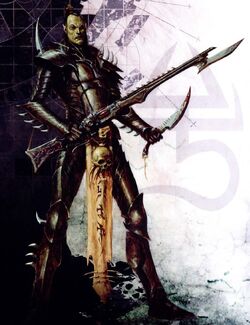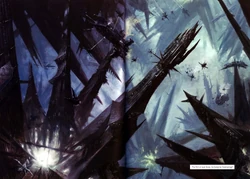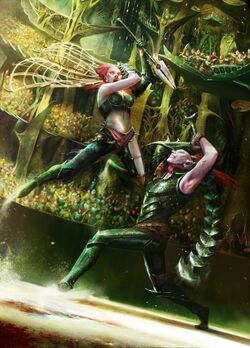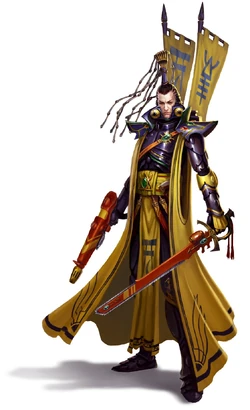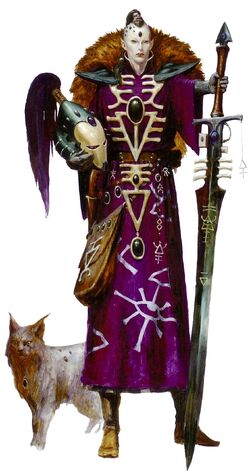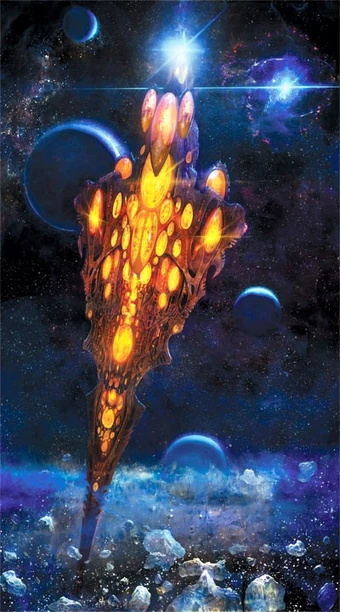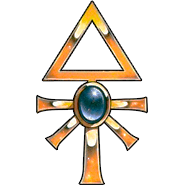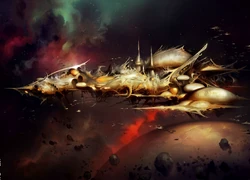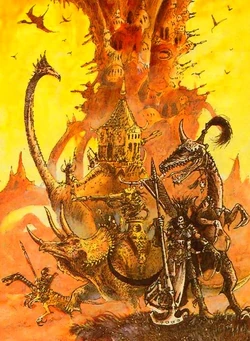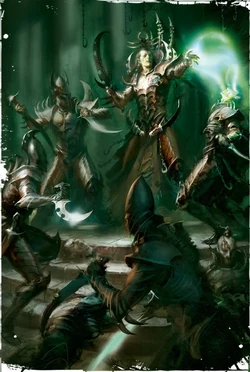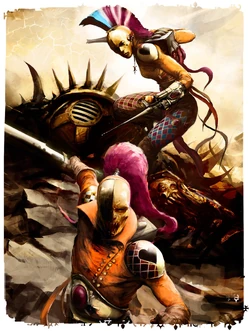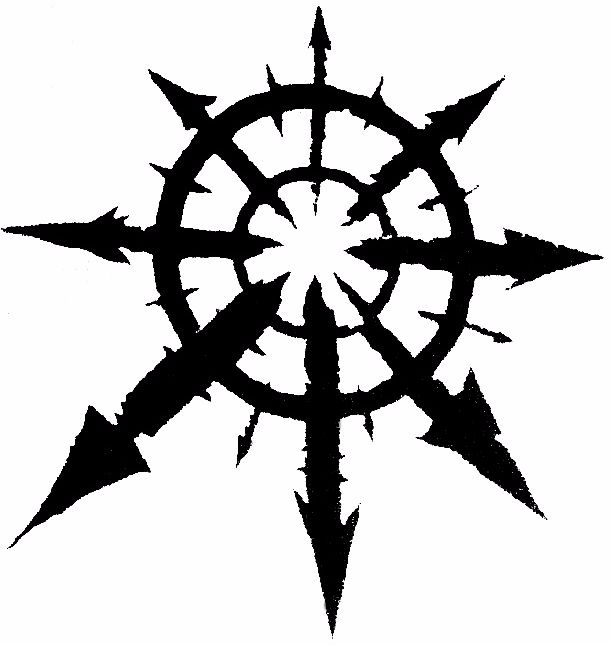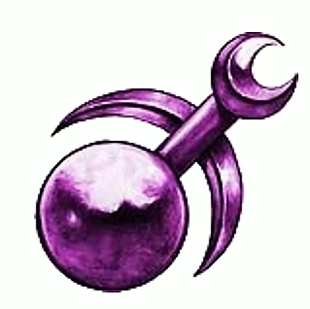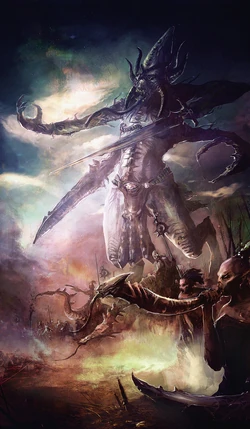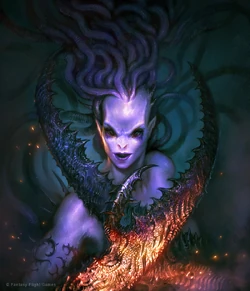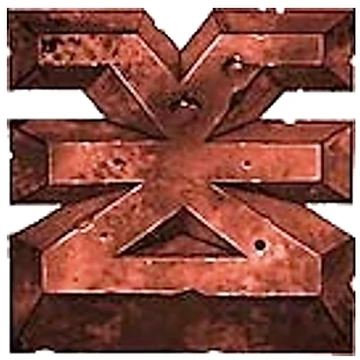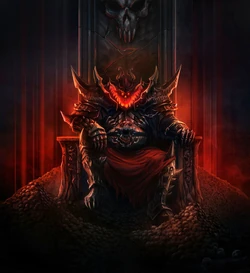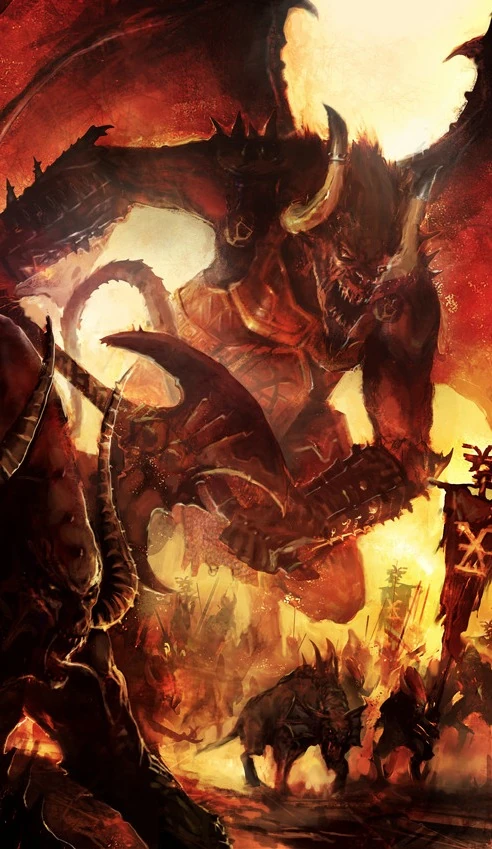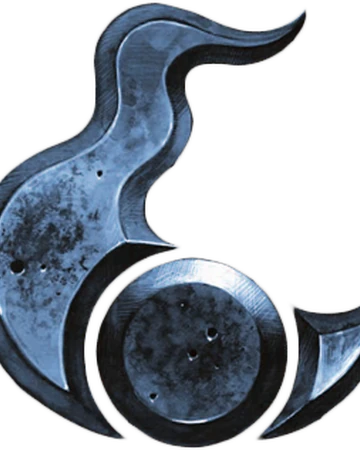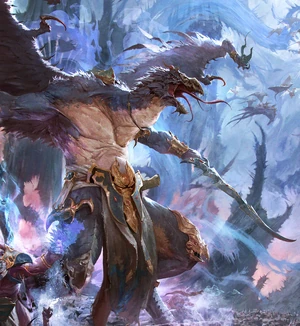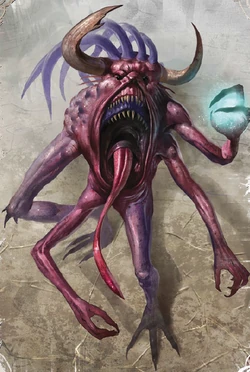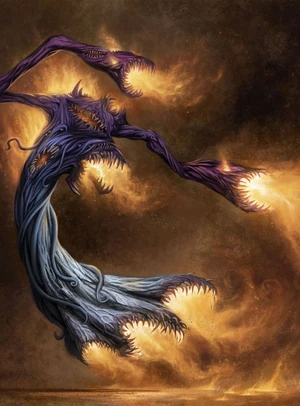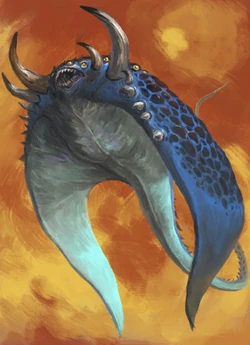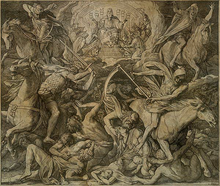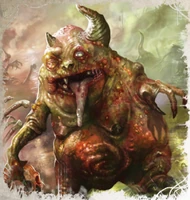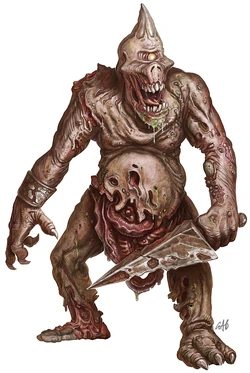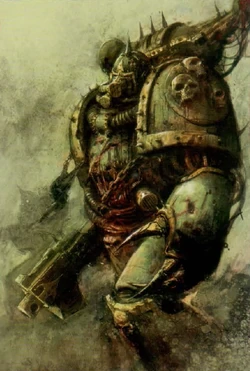Introduction
Our final segment of this series will describe a faction, that unlike any other Eldar sub faction do not have a direct connection to any fantasy trope per say, but is instead related to a much larger trope, that of the trickster. In this chapter will I once again give a comprehensive overview of the Harlequin Eldar as a faction. Furthermore will I present the trope of the trickster, as well as the role of the Harlequin within the concept of medieval theatre.
The trickster trope and the god of tricks
To properly understand these strange and erratic Eldar, must one first understand the trope that they are build upon. The idea of the trickster is one that can be seen in numerous cultures and myths. In Norse mythology we have the great shapeshifting Loki.
Trickster deities
The trickster exist in one form or another within numerous faiths across the world. Sometimes in an antagonistic form, sometimes as a protagonist, but mostly they seem to switch roles as their mood changes. From pop culture we can also find examples of trickster deities, such as Sheagorath from the Elder Scrolls series. Many of these spirits or gods tends to really on their wit and intelligence, and often strive to show up their fellow gods as well as high and might mortals by tricking or pranking them in some way. The trickster gods tends to be morally ambivalent in their actions, and often simply work towards their own amusement. (Haase 2007)
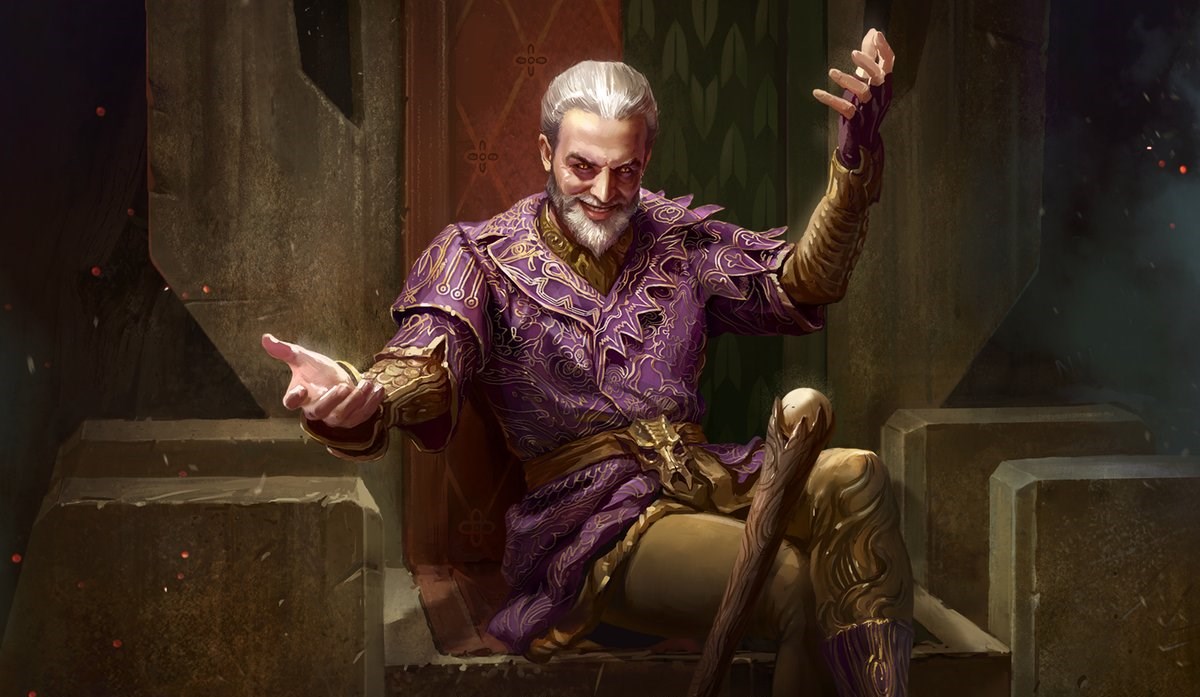
The trickster gods are often the embodiment of transgressions of norms and rules, often mixing and disregarding bounders between feminine and masculine, good and evil, homosexual and heterosexual, wise and foolish etcetera. (Haase 2007)
The character of the trickster
A trope that can be found within a large set of cultures and their written and oral traditions. Many myths and legends from the African hero Anansi the spider, to Loki of north mythology and more modern examples such as the Doctor from the series of Doctor who, and the Joker from the batman comics. (Haase 2007)
The trickster is often portrayed as a jester, clown, thief or prankster, seemingly working for no real goals other then for their own amusement. In folk lore they are often seen physically weak characters that wins the day trough their natural wit and sense of humour. (Haase 2007) They are sometimes presenters as heroes, but other times seems to live only to create chaos or acts fully for their own amusements. The tricksters roll in many narratives is to make fun out of established routines and power structures, and causing even the mightiest to fall.Fans of the Elder scrolls series are most likely familiar with the race of Kajiit, a catlike folk that in many ways honour and respect the many aspects of the trickster archetype, something we will discuss further in an upcoming series on the Elder scrolls universe! (Bethesda 2016)
The Harlequin in history and pop culture
Taking on many forms during the ages, but the version I will primarily look at today is the Harlequin of the Italian comedy school known as the commedia dell’arte. The role of the Harlequin was primarily to provide acrobatic amusements besides the more comical antics of the Joker and the clowns. Besides the acrobatic antics of the harlequin where they seminally also famous for sharp whit and mixing high and lowbrow humour.

The Harlequin was, just as the rest of the trope, incredibly colourful dressed, often wearing a full or partial mask, as well as large patterned uniforms. One of their more common unifying features being their black masks. The most inportant tropes of the harlequin are seemingly to be to be able to combine wit with absent-minded, elegance with clumsiness, to internalise both qualities at once.
The Harlequin Eldar
As we have discussed in the introduction, are the Harlequin Eldar seen as strange and mysterious, even by their own kind. These individuals travel in troupes or small theatrical societies, and dedicate their lives to the perseveration of the cultures, myths and knowlage of the ancient Eldar empire.
The laughing god
Amongst the only one of the Eldar deities that escaped destruction at the hands of Slaanesh. Cegorach or the laughing god hides within the Webway, where he plots and schemes, and leads his followers from the shadows. The followers of Cegorach are unique amongst the Eldar, for they seem to live fully without fear for their souls. It seems as the trickster god has managed to ferry away the souls of his followers, away from the hungry eyes of Slaanesh. (Games Workshop 2015)
Cegorach plans and schemes from within the Webway, always looking for new ways to make a fool out of the great enemy, and at the end of times, the laughing god will reveal his greatest trick, and perhaps even manage to save the Eldar race. Cegorach shares many traits common to other trickster gods, both in pop culture and in ancient myths. Cegorach relies primarily on his wit and sense of humour rather then strength or magical abilities, and while the laughing god are happy to help his followers, as well as play pranks on their greatest enemy, does it seem that he is equally fine with spoiling the plans for anyone that are to high and might and sure about themselves, one would amuse that this would also entails fair amount of Eldar Far seers. (Games Workshop 2015)
The elder trickster god is not to be confused with the Necron god The deceiver. This ancient entity is seemingly the cause of the Necrons transformation in to the metallic undead creatures they later become. It is worth noting that both of these warring factions each has their own version of the trickster myth. While the Eldar god is benevolent to his followers, and uses his trickery to help them, the god of the Necrons are rather the opposite. Note that this fact does not contradict the trickster character, as they are often morally anbivilant or agnostic, and are in may ways the embodiment of such contradictions. (Games Workshop 2015)
Roles and masks
Much like a medieval theatre, and classic Greek play, are the various characters of each myth and play, represented by colourful masks and costumes. Each troupe member has at least one character dedicated to playing each inportant roll, both off and on stage. Because of the addictive and hypersensitive minds of the Eldar, will the players personality inevitably start to blend with the rolls they play. (Games Workshop 2015)
The masks themselves are constructed ins such a way that the enemies greatest fears are projected back at their enemies. In reality does these masks convey the face of whoever the Eldar is assigned to playing. (Games Workshop 2015)
Nowhere is this more true then with the Eldar that plays the role of Slaanesh themselves. The actor that plays the great enemy is revered, feared and pitted in equal measure. These individuals lives outside of even the Harlequins fractured society, appearing only when their role is needed, either on stage, or at war. (Games Workshop 2015)
The troupes of the Harlequins follows one of tree paths, dark, light and twilight. These paths inform the philosophies the Eldar follow both in and out of combat. The light path is focused primarily on the telling of grand heroes and triumphant adventures, where the dark troupes focuses on tragedy, villains and darkness, the twilight seeks to convey transitions between the paths. (Games Workshop 2015)

War as art
Even more so then then their cousins the Dark Eldar and Craftworld Eldar, does the Harlequins see conflict and warfare as another stage upon which to perform their craft. Each fighter knows their own role, and the others in their troupe fully, and completely, both when it comes to their combat roles, and their specific parts of their play. (Games Workshop 2015)
Acrobats perform daring stunts in melee, and dark jesters bring death to the enemy in the most ironic and tragi-comical way possible. Often tying each death to some sort of poetic irony, they take out their foes from afar. (Games Workshop 2015)
Al of the harlequins war machines, and specialised combat units are riddled in myths and latened with symbolic meaning. This once again ties in to how close art and war are tied, not only in harlequin performances, but in the Eldar society as a whole. (Games Workshop 2015)
The role of the trickster is one that both Cegorach and his worshipers follows rather well, as their actions are guided by tricking and fooling their enemies as much it is to defeat them. (Games Workshop 2015)
Conclusions
The harlequin Eldar is a highly interesting faction, and one that ties the other Eldar together, both figuratively, and within fiction. There are several truthiness that can be found throughout the Eldar factions, and most, if not al can be found with the harlequin Eldar. Just like the Exodietes do the Harlequin Eldar do their best to keep the old ways and traditions alive. The harlequins are endless wanderers, just as their cousins, the Craftworld Eldar, and just like the Dark Eldar do they see war more as an expression of art, then a means for survival or conquest. Note that the Harlequin Eldar seems to take their role as storytellers as seriously as they do their duties on the battlefield, and more often then not are the two closely interwoven.
The close ties to the medieval French theatre form, in many ways makes the Harlequin Eldar stand apart from the previous factions we have looked at so far. Other then perhaps the Sisters of battle have no other faction been so closely tied to such a specific cultural concept. In the Eldar harlequin we can also see ties medieval European cultures, a trend we saw time and again within the Imperium of mankind, but then from a mainly British point of view.
The role of the trickster is one that both Cegorach and his worshipers follows rather well, as their actions are guided by tricking and fooling their enemies as much it is to defeat them. (Games Workshop 2015)
References
The elder scrolls V Skyrim. (Special edition). (2016). [Rockville, Md]: Bethesda.
Donald, Haase. (2007). The Greenwood encyclopedia of folktales and fairy tales
Te Velde, H. (1968). The Egyptian God Seth as a Trickster. Journal of the American Research Center in Egypt,7, 37-40. doi:10.2307/40000633
Codex: Harelquin Eldar (7th Edition), Games Workshop, 2015 (2)

